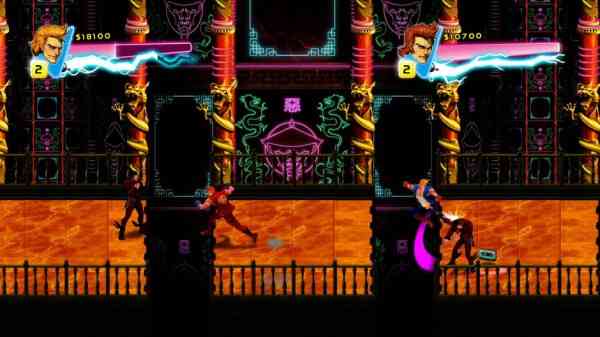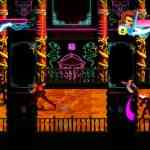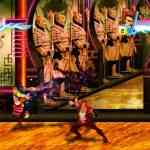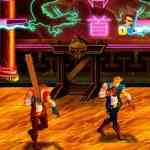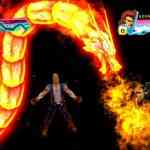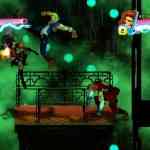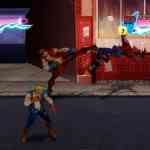Back in the glory days of the NES and the Master System, before we had PSN and XBLA – not to mention the Internet – players settled for the couch or the Arcade to meet their multiplaying needs. There were no online 16 and 32 player matches across an international network that supported parties, voice chats and friend lists; there was only you, your best friend, two controllers and your library of platformers, fighters, shooters and beat ’em ups. While not as popular since the advent of 3D gaming, beat’ em ups like Streets of Rage, Battletoads and Golden Axe were one of the more popular choices for cooperative play with your buddies.
Among these great brawlers, it could be argued that no single game has defined the genre we know and love more then Double Dragon, a game about the Lee brothers Billy and Jimmy, traditional martial artists fighting tirelessly through gangs of thugs and degenerates to rescue their kidnapped mutual love interest Marian. The game was developed in 1987 by Technōs Japan for Arcades, and then later for a number of home consoles. Prior to the introduction of the two player co-op mode for Double Dragon’s arcade version, most brawlers featured only single player or turn based multiplayer. Cooperative gameplay in side scrolling fighting games was relatively unheard of and drastically changed the genre. It wasn’t long before other developers, inspired by Technōs’s success, followed suit with their own bundle of cooperative titles. The Double Dragon legacy even gained momentum in pop culture, spawning not only various sequels and ports for multiple platforms, but appearing in other mediums like comic books, cartoons and movies.
There’s no doubt that the Double Dragon series has been a great influence on the video game industry, which still remains true twenty five years later; but how does this classic 80’s hit measure up to modern day beat ’em ups like Castle Crashers and Scott Pilgrim vs. the World ? California based developer WayForward Technologies sheds some florescent light on the subject with Double Dragon: Neon, a nostalgic remake for direct download on both Xbox Live and Playstation Network. When it comes to the reimaginings of our old favorite games, few developers have proven more qualified to add new flavor to aging classics then WayForward, producing award winning reboots like Contra 4, A Boy and His Blob and BloodRayne: Betrayal, all of which were critically acclaimed as successful tributes to their original predecessors. So I ask myself, does WayForward manage to capture our hearts again with their interpretation of the first Double Dragon? The answer is…maybe?
Double Dragon: Neon has a lot of fun throwbacks to the classic era of gaming, like cheesy vocal dialogue, eccentric personalities, big hair and air guitar solos galore. WayForward does a great job of establishing that 80’s nostalgic tone and aesthetic, and manages to slip in a bunch of popular references from the old Double Dragon games that fans are sure to pick up on. This time around, the game is intentionally more campy and silly, completely aware of itself with over the top characters and levels. It’s always a gamble when a game tries to bank on being funny, and I think Neon does a fairly good job of it, although it focuses a bit to much on poking fun at 80’s pop culture and not enough on actual game play.
As for the gameplay, Billy and Jimmy’s movements feel sluggish and unresponsive. Their fighting and dodging animations are slow and robotic – once you commit to an attack, you’re pretty much stuck until the animation cycle is done. Also, the inability to turn around in mid-air feels static and frustrating, and lining yourself up to grab and throw a guy is almost impossible. The fighting feels outdated, fairly unchanged from the older iterations, and while I get their attempt to stay true to the original source, it doesn’t justify the clunky mechanics. On a positive note though, hitting people feels really satisfying…the punches and kicks feel weighted and heavy, knocking guys senseless and sending them flying into walls and objects. If you can get past the limitations of the controls, there’s actually a lot of fun to be had, and a lot of content to discover.
Like the previous games, you pull off combo attacks with powerful jabs and kicks, which damage and stun multiple enemies at once. You can also perform drops kicks, jumping knees and sweep kicks to mix up your attack patterns. When you start to get crowded, you can dodge enemy attacks and roll out of harms way. If you time your dodges just right, your fighter will be temporarily buffed with gleam, a state in which your attack damage is doubled. Many of the dudes you’ll face will be armed with an assortment of weapons; like baseball bats, knives, throwing stars, whips, hair combs…there’s a pretty long list of stuff, both practical and ridiculous. When you knock them down, they’ll drop whatever item they’re holding, making the weapons fair game for whoever grabs them first. These babies can be thrown at opponents, or used up close as melee weapons for massive damage. Either way, there’s a lot of ways to strategize each encounter and you’ll definitely need to plan as the levels get more intense, especially if you’re doing it solo.
If you’re playing co-op, there’s an entertaining meta game you can play with your partner. At anytime during a level, you and your partner can perform over-dramatic high fives with the right analog pad. It’s similar to rock, paper, scissors – where one player initiates with the touch of a random direction, and the other player answers with their own direction; gaining health or gleam as a result. If you’re feeling prankish, you can troll your partner by pulling a psyche, which will force him to miss your high five and steal his health instead.
Neon adds a new RPG element to the game with Mix tapes, special items dropped at random by enemies. It’s a system that lets you equip different techniques and stances, in the form of songs, to enhance your fighting abilities and give you an advantage in combat. Techniques, known as “Sosetsitsu”, are powerful special attacks like Fireballs, Lightning, Dragon Swarm and even the classic Spin Kick. Stances, the other type of mix tape, are passive abilities that increase your stats with a specific focus, like absorbing health, buffing magic, strengthening attacks and so on. Often times you’ll pick up tapes you already have, but each time you collect them, that specific ability with level up. Another way to quickly upgrade attacks is to collect mithril from Bosses, which can then be spent at the Blacksmith to level your tapes even faster.
The environment and look of the game is a mixed bag. I enjoy the clever usage of 80’s pop humor in the design of each level and the way each map is more extreme and goofy then the last. The enemies are also pretty fun to battle, being cheesy and unique in how they fight and interact; screaming out random statements like “Gymnastics!” and performing extravagant attacks and gestures. Unfortunately, the 3D models of the characters and weapons are really generic, and frankly a lot less impressive then I’ve come expect from WayForward, considering the quality of their previous games. One redeeming quality of Neon is the amazing sound track inspired by the the original game and the pop music of that era. On top of the great BGMs for each stage, every power and stance you earn feature their own original songs, which you can listen to in the selection screen.
Double Dragon: Neon is a lot like restoring a favorite old car – you can repaint it, give it a good waxing, add a bunch of flair and make it look shiny; but without new parts, it’s still the same old car you drove 25 years ago. If players are more concerned with their fond memories of an old series then polished mechanics and updated controls, then Double Dragon: Neon is certain to delight them with a ton of charm and appeal that is a welcome addition to the Double Dragon Saga.


